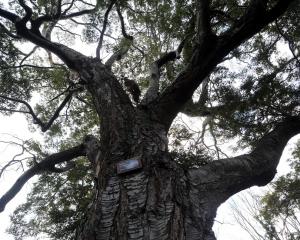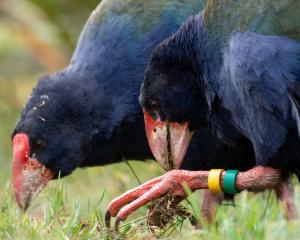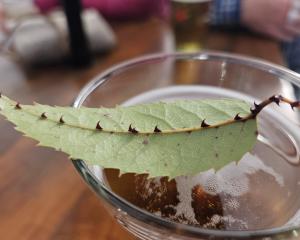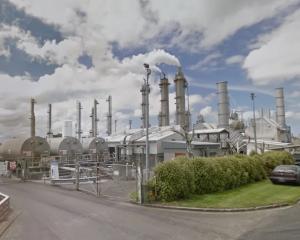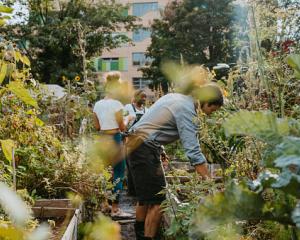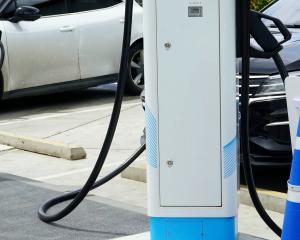
Q Ngai Tahu is facing up to the challenge of climate change with its climate change strategy, Te Tahu o Te Whariki: Anchoring The Foundation. Why has the iwi taken this action at this time?
Over five years ago there were a lot of conversations going on across the country around climate change. Ngai Tahu started to consider how we might need to respond to climate change within our regions and that’s how the strategy started. This work didn’t just start because of all the hype around the Zero Carbon Bill, or because of the korero happening around the world about climate change, the iwi started this work well before the Paris Agreement was signed. We identified early that we needed to have a response to climate change within our regions as kaitiaki — mo tatou, a, mo ka uri a muri ake nei — to ensure that we’ve got resources that are sustainable for future generations, and how the decisions we’re making now are going to impact in another 50 years. We needed a strategy that was going to give us guidance and a strategy that was built from the ground up, one that was well-informed by our people, by our papatipu marae and our regions.
Q The strategy references Te Kereme (Ngai Tahu’s Treaty of Waitangi claim); what is the particular importance of that in terms of addressing climate change?
We’re anchored in Te Kereme and the principles of that. Everything we do should always be anchored back into those principles — mo tatou, a, mo ka uri a muri ake nei. That is at the heart of all our decision making. I always think about, and challenge my board to be thinking about, the decisions we need to make today to ensure that in 50 years’ time, we’re prepared for that generation. That’s what Te Kereme requires of us; we’ve got a duty to uphold that foundational document, and a number of the kaumatua who participated in the drafting of that document are no longer with us today. Te Tiriti o Waitangi and our Ngai Tahu Settlement Act also put upon us certain responsibilities to ensure we have a strong climate change response. The Zero Carbon Bill select committee process resulted in some really good recommendations to ensure that te ao Maori and iwi Maori are factored into the decision-making of the new Climate Change Commission. There will be requirements on the commission to ensure there are strong relationships between the Crown and Maori, so we’re fortunate that we’re seeing a piece of legislation that reflects Te Tiriti o Waitangi and the obligations on commissioners to give effect to the principles of Te Tiriti. Along with Te Kereme and those particular pieces of legislation, there are obligations on myself and current decision-makers to ensure that we make good decisions for those next generations. Seven generations fought for settlement and it’s our obligation to ensure we’re doing right by those generations, and the generations to come. That requires us to think about what we’re doing as kaitiaki, within our communities, and what we’re doing in a commercial sense and a social sense to ensure our communities are equipped to manage climate change.

The Arahura pa, where I’m from, has moved a couple of times over centuries due to coastal erosion. I understand from kaumatua that the original pa site and whare tupuna is actually probably part of the foreshore and seabed now. What we’re planning for at the moment is the next move of the Arahura pa, and we’re securing land up near the marae so that we can move this pa, because the coastal erosion has led to significant change. For our people, who have lived for centuries alongside the sacred river, the Arahura, it’s about moving them slightly away from the awa, but that’s to ensure long term sustainability of the Arahura pa. We’ve also seen a huge change in our mahinga kai. My dad will talk about when he was a young man and going to catch these very small tuna. Every morning they would go up to the Arahura bridge and drop their nets and bring that kai up every day. Those tuna no longer exist in the Arahura river.
Q How is the wellbeing of the iwi entwined with the wellbeing of the environment?
Ngai Tahu has an incredibly large land mass. Of all iwi in Aotearoa we have the largest area, and it’s diverse in terms of rivers and mountains. Twenty-two years post-settlement a lot of work has gone into building the capability and capacity of our regions to deal with environmental issues. We play a key role in our kaitiaki responsibilities within the environment, but on the other hand we also look at economic opportunities within our environment — so there’s a dual role that we have and we try to find the happy medium where economics can happen within the environment and the environment can continue to be protected and sustained.
Q Te Runanga o Ngai Tahu has been a voice for more meaningful action on climate change, and the strategy doesn't mince words. It talks about the prospect of 3degC of warming, 2m of sea-level rise, many more hot days for Aoraki and 70% more rainfall on the West Coast. Can you talk about this analysis with reference to the whakatauki: "Hope for the best, prepare for the worst"?
We’re not prepared to just assume that everything will be OK, although we’re confident that humanity will take steps to take us in the right direction. That takes us working in partnership with a lot of people and participating in a large number of forums to influence and take people on our journey, but also support the work of others. There will be a range of variables that will dictate what the future looks like, but we’ve got the responsibility to ensure that we’re making decisions now that will put us in the best position possible.
Q How was the analysis informed by science?
We commissioned Niwa to provide us with a report that informed our strategy. Using science, forecasting out change within the Ngai Tahu takiwa, and going out over a long period gave us the ability to clearly understand what’s going to happen in Canterbury for example, and where the hot spots are going to be. We’ve got issues already around water, drought and dried up rivers within the Canterbury region and if you wind that forward 50 years, we’ve got information that tells us how that’s going to be further impacted by climate change. So, what does that tell us as an iwi? It tells us that our water strategy is extremely important, the preservation and the mitigation to protect those waterways. Particularly in the Canterbury region, we’ve got to work with other agencies to rejuvenate those waterways, if at all possible. We’ll be continuing to tap into the IPCC reports, and to monitor what the Climate Change Commission are doing. The good thing about the iwi is we’re not tied into any particular government policy. We can pivot, change direction and move and be nimble with our own strategies — we can adapt to new scientific evidence that might come along in the next five to 10 years.
Q How does the application of Ngai Tahu matauraka (knowledge) help in all this?
We tend to look at things holistically. I mentioned our freshwater strategy earlier; you can’t deal with climate change without dealing with the water issues, so we need to look at the whole ecosystem. If we look at our mahinga kai (food and natural resources) — what do we know about the seasons for our mahinga kai? What do we know about the ecosystem required to sustain our mahinga kai? There are a huge amount of learnings from a matauranga Maori perspective. Our people know those things inherently — they don’t need science to tell them how to manage our ecosystem and sustain our mahinga kai. Matauranga helps us significantly and our whanau are already actively trying to affect change in their communities for the preservation and protection of mahinga kai. There’s real mana and value in those resources themselves, so it’s important that we find the mechanisms for how we can ensure Ngai Tahu matauraka is factored into any local and regional council decision making, and we’re in a good position to do that.
Q Are there particular landscapes, resources or taonga species that are at risk from climate change that cause particular concern?
Without a doubt — we’ve got the impacts that we’re seeing on our titi, through to wetfish and shellfish. The harvesting of these are woven into our tribal economies — they’re a way of life and of cultural identity, so we have to ensure that we’re doing what we can for that preservation, mitigation and protection of those species. There’s a risk in terms of our alpine environments. They face significant change at an accelerated rate, and what happens in the mountain ranges of our takiwa will have a profound effect through the rest of our regions. We already know we’re going to have heavier rainfall on Te Tai Poutini and then if that’s going to be compounded by mountain changes, what does that mean for the West Coast? Less snowy peaks mean less stored freshwater, which will affect regions like Canterbury. So, there are a huge number of considerations.
Regarding kaimoana, we need more science to better understand what we can do. While the ocean temperature and chemistry changes will bring challenges to many species, there are human-related pressures as well. If we can understand what rising sea temperature levels are going to do for potential kaimoana species, there could also be opportunities if we can start to plan ahead.
Q What is Ngai Tahu doing in terms of preparing the papatipu runanga for challenges in their particular rohe?
We’ve just dedicated a fund towards climate change and from that investment we’ll work with our papatipu runanga, so they produce their own climate response plans — specific to their takiwa, their marae, and their businesses. We are working to ensure we create resources and tools informed by science that advise whanau well. An example of a priority area is that we know there are issues with an urupa in Moeraki, the coastal erosion is of acute concern around the preservation of that site. From an iwi perspective, we’ll be able to identify through these plans where the hotspots are and where the key priority areas are that are going to need resources injected into them to assist papatipu runanga with their response.
Earlier this year, we held a climate change wananga with representatives from our 18 regions. We brought in some experienced keynote speakers working in the climate change space to share a national and international perspective with whanau. In that wananga we were able to get our people to focus on what are the key areas of priority they want us as an iwi and decision-makers to be thinking about. The three areas that were identified were mahinga kai, wai Maori, and marae resilience. We also created a forum for our rangatahi, so they had their own climate meeting and they were able to come back and tell us what their priorities and aspirations are for climate change.
Q Ngai Tahu has taken a leadership role as part of the Climate Leaders Coalition. What does this mean in terms of plans to reduce greenhouse gas emissions from Ngai Tahu's own operations, and exit assets and practices inconsistent with a best possible climate outcome?
Through the iwi climate strategy, we’re beginning to drive emission reductions within our tribal businesses, in order to show leadership in this space. All our subsidiary businesses need a climate action plan, and within that plan we expect to see how they’re going to drive down their emissions. So, whether that’s in our tourism company, our transport companies, or our farming company, all of them will need to show how they are going to be climate-responsible and how they are going to be innovative and adapt. Each of our Holdings subsidiaries are producing those plans and submitting them to the board early in the new year, and we’ll have a good idea around where there could be areas within the organisation that might not meet our expectations. From there, processes will be put in place for dealing with that. They do have to show us how they’re going to give effect to the overall tribal strategy. Our business includes sectors that continue to be those of most interest in terms of domestic emissions, including agriculture and transport. While this does place pressure on us to change the way we operate, it also provides us a chance to be at the forefront of changes that enable climate responsible land use and transport options.
Q Ngai Tahu's strategy also talks about identifying places and species of future abundance and thriving even in the most extreme scenarios. What might that mean?
The reality of climate change is that it’s a very emotional topic. Some people find it really daunting and it’s framed quite negatively, with a focus of loss and disaster. We have to be conscious of reassuring whanau that’s only one part of the picture and as social and economic structures adapt to the coming changes, there will be opportunities as well as challenges. Maintaining flexibility and openness to new ideas is crucial. As I said, as an iwi we can be nimble, and we adapt and evolve quickly so we’re equipped to meet these challenges head on. Mahinga kai practices continue to adapt as the effects of climate change are felt. For example — we might find fewer blue cod as they move south to colder temperatures, but we may start to see more snapper instead.
Q Among longer-term actions, the strategy talks about preparing for whanau returning home from places where climate impacts are more severe. How soon do you think we might start seeing that?
We have other strategies that we’re working on with a focus on regional development, and part of that is to try to get more of our whanau to come back home. We’re trying to build up capability and capacity in some of our smaller regional areas and that requires our whanau to return. It also requires jobs, housing, and ensuring we can get thriving tribal economies within particular areas where we’re wanting whanau to come home. We’ve got a lot of whanau living overseas, in countries like Australia, which has seen recent catastrophes such as fires, droughts, and wild weather patterns not unlike what we saw in Otautahi recently. So, when whanau living overseas want to return home, whether that’s due to environmental changes or other factors, we want to be sure we are ready to receive them with open arms.

